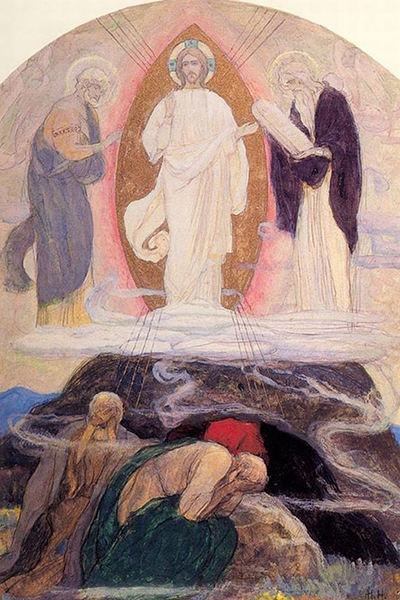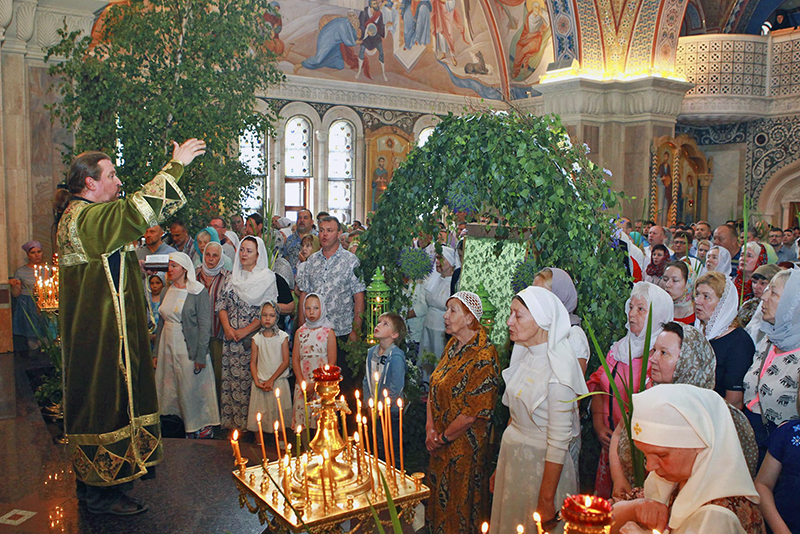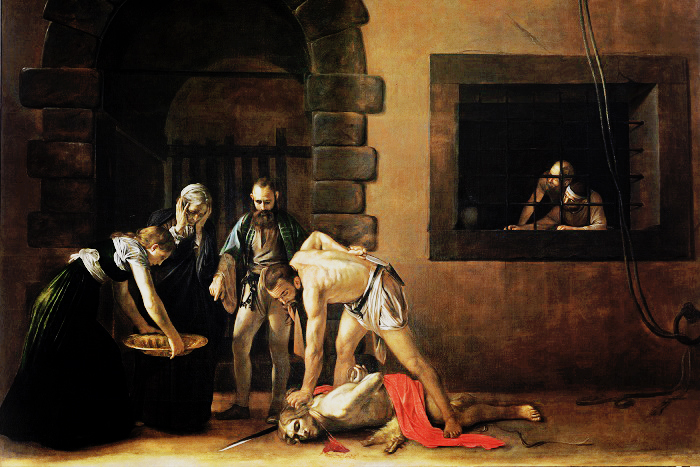
The Transfiguration of the Lord is one of the most important holidays in the Orthodox Church. Three semantic meanings are intertwined in it so much that it is difficult to separate one from another. We will try to do this to be clear what exactly we are celebrating on the day of the Transfiguration of the Lord.
Let us start with the fact that for a long time the Transfiguration of Christ was not attached to any specific day in the church calendar. Oddly enough, the date of August 6 (19) is not the real date of this event. We do not know the day of the Transfiguration of Christ just as we do not know the exact day of His Nativity. The actual date of the Feast stems from a historical fact: in the 4th century, a basilica church was consecrated on Mount Tabor, originating the local tradition of commemorating this event. Over time, the historical content faded and the memory of the Transfiguration replaced it. This tradition was reflected in the Jerusalem Typikon. Over time, when the Typikon supplanted almost all other ecclesiastical rules in the Orthodox Church, the day of the Transfiguration began to be celebrated universally.
When and where did the Transfiguration of Christ actually take place? It is difficult to answer this question. There are several versions. According to Church tradition, the Lord was transfigured on Mount Tabor 40 days before his death. However, the Gospel has no specific indications of either geographic points or chronology. Christ ascended the mountain and showed the disciples His glory – that is all that the evangelists say.
According to one version, the event of the Transfiguration took place not on Tabor, but on Hermon—also a Galilean mountain, much larger than Tabor. This hypothesis is supported by the fact that at the time of Christ there was a fortress on Tabor, where He would hardly have been able to retire with his disciples. At the same time, Hermon was a very high hill, covered with dense greenery, making it an excellent place for solitude and prayer. This said, any significant hill, of which there are plenty in Palestine, could fit under the gospel concept of a mountain. Largely, it is not that significant where and when exactly the Transfiguration took place. After all, the gospel events are beyond space and time. Each episode from the earthly life of Christ took place “for us men and for our salvation”, regardless of time, place or any other material categories. The most important thing here is the fact that the Transfiguration actually took place.
Speaking of the Feast, we need to answer another, much more significant question: why was Christ transfigured? At first glance, this seems like an unusual event in the life of the Savior. He healed crowds of people and performed unprecedented miracles, asking those he healed not to speak of Him. Christ avoided fame and rumors in every possible way. He categorically refused to accept the image of the King and the Wonderworker, which the crowd imposed on Him. Why should Christ be transfigured?

This question is answered in a short episode preceding the gospel story of the Transfiguration. In it, Christ asks the disciples who they consider Him to be.
On behalf of all the apostles, Peter firmly says, “You are the Son of God!” These were not just words of a disciple flattering his Master. These were words of confession, coming from the heart.
Then, in response to the apostles’ faith, the Lord showed them His glory. If the Transfiguration had happened at the beginning of the Savior’s ministry, it would not have had the same meaning. The disciples would then immediately recognize Christ as God, simply out of fear.
The confession of Peter would then have been made under constraint. However, the Savior did not want to force anyone, and therefore He did not reveal His divinity up to a certain time, so that the disciples would freely understand in their hearts without any coercion that He is not just a Teacher, but also the Son of God.
When the disciples finally professed their faith, the Lord appeared before them in a transfigured divine form. He did this for a specific purpose. First, He was about to face a terrible and painful death, and He knew that it was going to be a very serious test for the disciples. Most of the apostles abandoned Christ at Golgotha, but still the memory of the Transfiguration and the thought that He is God, did not allow them to leave Him completely. In the terrible days of the Crucifixion and death of Christ, the Transfiguration, once witnessed by the disciples, served for them as a kind of a guarantee of His future Resurrection. Secondly, the Transfiguration indicates that Christ goes to Golgotha completely freely and consciously. The same is reflected in the hymn of the Feast: “…so that when they would behold You crucified, they would understand that Your suffering was voluntary.” Christ figuratively says, “Behold, I can call on millions of angels, but I will not do this. I am the King of the world; I am the Creator of the universe. However, I am also a loving God who gives Himself for the salvation of the whole world. And I do this completely voluntarily.”
The transfiguration makes another very important theological point. The fact is that everything that happened to Christ in His earthly life will happen to us. We will be resurrected and transformed in the same way. The state of the resurrected Savior is the deified state of human nature, which all people will acquire in eternity. The Transfiguration points towards that which awaits us all after the second coming. The glory of the Transfiguration is the destiny of all people who will enter eternity with the Savior and share with Him the joy of the Kingdom of God. This is why the Church cherishes this holiday so much: from year to year, it reminds us of the good and worthy goal to which we are called by God himself. Transfiguration is the brilliance of the Fatherland, where we are remembered, loved and welcomed.
Translated by The Catalogue of Good Deeds
Source: https://foma.ru/preobrazhenie-proobraz-vseobshhej-slavyi.html




